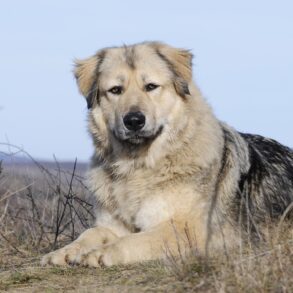
EAST TAWAS – Several businesses and organizations are reminding the public that – despite the steady drop in temperatures this cold weather season – there are multiple ways in which they can not only keep themselves and their pets protected, but also cut energy costs.
For example, those from Consumers Energy (CE) have shared several tips to “Kick Out the Cold” this winter, and take control of home heating costs through easy to implement strategies.
The company states that Michigan’s frigid winter weather is here and, with colder temperatures, also comes an increase in energy consumption.
Whatever one’s “cozy” is – be it inside by the fireplace, under a blanket or with a hot cup of coffee – representatives say that CE is here to help keep you warm. They add that while customers may see a seasonal increase in their bills this winter, CE is prepared to assist them in kicking out the cold by providing energy saving strategies and useful resources for customers who may need help paying for their higher heating costs.
“Simply making a few small meaningful changes can make a big difference for your wallet, without sacrificing your comfort,” notes Lauren Snyder, CE’s vice president of customer experience. “We want to be sure our customers stay safe and warm this winter.”
According to the company, home heating costs make up about 30% of customers’ energy bills – with water heaters, alone, accounting for almost 15%. By addressing these key areas of consumption, residents can take control and maximize their cost savings.
One of the easiest ways to save, is by installing a programmable smart thermostat. CE reports that doing so, could save as much as 20% on heating costs. They further point out that customers typically save 1-3%, for every degree they dial down their thermostat. Plus, they can save by installing a programmable or wi-fi thermostat, often at reduced costs, through ConsumersEnergyStore.com.
CE has offered the following additional cost-savings tips, as well:
- Have your heating system tuned up and inspected by a service professional, and replace your furnace filter. If your furnace can breathe more easily, it will use less energy.
- Make sure your attic, basement, garage and exterior doors are closed to prevent cold drafts from getting in and heat from getting out. A gap of just one-eighth of an inch around your windows or doors is like having a softball size hole in them, allowing cold air in and making your furnace work harder to accommodate for that extra cold air.
- Turn on your ceiling fan. Ceiling fans set at a slow speed can push warm air away that rises to the ceiling, and move it around the room without creating a chilling breeze.
- When it comes to savings on heating your water, take a shower instead of a bath, which uses less hot water.
- Set your water heater temperature at 120 degrees. By lowering the temperature, you can cut water heating bills without sacrificing comfort.
- Save even more by setting your water heater to “on vacation,” if your unit has this feature, when you’re away from home more than two days.
CE has prepared an even more comprehensive list of tips and, to see all of the “100 Ways to Save,” customers can visit consumersenergy.com/saveenergy.
Snyder is also reminding people that help is available for anyone who needs assistance with their energy bill. They can either call 2-1-1, a free resource that connects people with nonprofit organizations, or visit consumersenergy.com/assistance.
The weather may be chilly, but it also represents a celebratory time for many, as it marks the start of the holiday season.
Experts from the U.S. Fire Administration (USFA) state that decorating homes and businesses is a long-standing tradition this time of year. Unfortunately, though, these same decorations may increase your community’s chances of a fire.
According to the USFA, almost one-third of home Christmas tree fires are caused by electrical problems, Christmas is the peak day for candle fires and nearly half of holiday decoration fires happen because the items are placed too close to a heat source.
Representatives add that it’s fun to dress up one’s home for the winter holidays, but they also warn that decorations can increase the risk for a house fire. So, as you deck the halls this season, the USFA and National Fire Prevention Association encourage you to be fire smart, as well, and follow the guidelines listed below.
- Inspect holiday lights each year before you put them up, and throw away light strands with frayed or pinched wires. Also, read the manufacturer’s instructions for the number of light strands to connect.
- Water your Christmas tree every day. A dry tree is dangerous because it can catch on fire easily – burning very hot, and very fast. Get rid of your tree after Christmas, or when it is dry.
- Make sure that your tree is at least three feet away from heat sources, such as fireplaces, radiators, space heaters, candles or heat vents. Furthermore, be certain that your tree does not block exits, that lights are not left on unattended and that only non-flammable decorations are used.
- Consider using battery-operated, flameless candles, which can look, smell and feel like real candles.
- If you do use lit candles, keep them at least 12 inches away from anything that burns. Ensure that they are in stable holders, and place them where they cannot be knocked down easily.
Moreover, the Federal Emergency Management Agency (FEMA) is also urging people to give the gift of life this season, by adhering to the message, “Keep your friends safe from harm…Send each one a smoke alarm.”
Listed as follows, FEMA is encouraging people to:
- Install smoke alarms on every level of the home, outside sleeping areas and inside bedrooms.
- Test all smoke alarms in your house once per month.
- Replace smoke alarm batteries at least annually.
- Replace smoke alarms which are more than 10 years old.
- Develop and practice a home fire escape plan.
For additional information and free fire-safety resources, visit www.usfa.fema.gov. For further details on how to prevent winter fires, in particular, go to usfa.fema.gov/holiday and nfpa.org/winter.
Aside from protecting one’s pocketbook from high energy costs, and ensuring the safety of the humans in their household, those with pets need to also keep their animal companions in mind during the cold weather season.
TrustedHousesitters, in collaboration with veterinary surgeon Dr. Rebecca MacMillan, report that veterinarians are urging dog owners to rethink their winter walking routines, ahead of plummeting temperatures.
They add that according to veterinarians, the impact of cold temperatures on pets has become a growing, critical issue.
“Most of us take sensible actions over the winter to look after ourselves, but we also need to think about how to keep our pets safe,” says MacMillan. “The chilly weather can be enjoyed safely with our furry companions as long as you take a few simple precautions.”
Therefore, she and TrustedHousesitters are highlighting how education surrounding unsafe walking temperatures could save pets’ lives. They have released the following essential advice for winter dog walking safety:
- Know Your Dog’s Cold Tolerance Threshold – Research shows that medium to large dogs can typically handle 30-minute walks in temperatures above 20°F. However, smaller breeds should be limited to 15-20 minutes when temperatures fall below 32°F. Breeds such as dachshunds, pugs and Yorkshire terriers need extra protection; while thick-coated breeds, including huskies and German shepherds, can handle colder conditions.
- Watch For Subtle Warning Signs – Act immediately if you spot early warning signs of cold stress, such as shaking or shivering (don’t assume this is normal winter behavior); walking stiffly or lifting paws, which could indicate painful ice between paw pads; hunched posture with tucked tail, which may be a sign that your dog is trying to preserve body heat; and/or whining or barking unnecessarily, as your dog may be trying to communicate discomfort.
- Time Walks Strategically – Plan walks during the warmest part of the day, typically between 11 a.m. and 2 p.m. Also, break up exercise into shorter, more frequent walks, rather than one long exposure to cold conditions. This allows both you and your dog to warm up between outings, while maintaining necessary daily exercise.
- Create a Winter Walking Toolkit – Winter walk preparation requires more than simply wrapping up in layers. Create a dedicated space by your door with winter walking essentials, including a high-visibility lead for darker days, paw balm to protect against salt and grit and a towel for drying wet fur immediately after walks. For days when outdoor exercise isn’t possible, keep a selection of engaging indoor toys handy. These provide vital stimulation when winter walks need to be cut short. Most importantly, ensure your dog has a cozy spot to warm up post-walk, away from any drafts.
MacMillan and TrustedHousesitters also urge pet parents to protect vulnerable animals. For example, they have noted the following ideas as extra precautions to take for at-risk/vulnerable dogs:
- Senior Dogs and Puppies – Limit outdoor time to quick toilet breaks in severe weather.
- Dogs with Health Conditions – Arthritis can worsen in cold weather, so consider indoor exercise alternatives.
- Small Breeds – Invest in a well-fitted winter coat for additional warmth.
- Short-Haired Dogs – Consider protective boots for icy conditions, and to prevent salt grit irritation.
“Our global community of pet sitters regularly share concerns about winter walking safety, especially for dogs they’re caring for in different climates. We’ve seen firsthand how different breeds react to cold weather – what’s comfortable for a Scottish highland collie might be dangerous for a Mediterranean whippet,” explains TrustedHousesitters Head of Community, Angela Laws.
“These vet-approved guidelines help pet owners make informed decisions about winter exercise,” she continued. “It’s about finding that balance between keeping our furry friends active and ensuring their safety during the colder months.”
For more advice on pet care throughout winter, visit TrustedHousesitters’ guide at trustedhousesitters.com/blog/pets/is-it-too-cold-to-walk-my-dog/.
This post was originally published on this site be sure to check out more of their content.







































